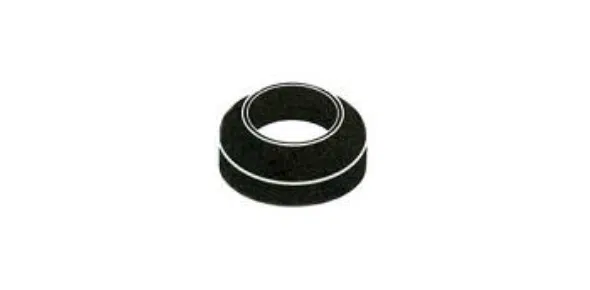
The tank-to-bowl gasket is a piece of equipment that is used to seal water from leaking between the tank and bowl of the toilet. It is an essential component in maintaining the proper functioning of the toilet and preventing any water leakage. Without this gasket, water could seep out and cause damage to the surrounding area. Therefore, it is important to ensure that the tank-to-bowl gasket is in good condition and properly installed.
Swimming pool lights should always be protected with a ground fault circuit interrupter (GFCI) to prevent electrical shock. A GFCI is designed to detect any imbalance in the electrical current and quickly shut off the power if it senses a ground fault or leakage of current. This is crucial in a wet environment like a swimming pool, where the risk of electrical shock is higher. A warning sign may alert people to the presence of electrical equipment, but it does not provide the necessary protection. A plastic cover and a 30 amp circuit breaker are also not specifically designed to prevent electrical shock in a swimming pool.
The correct answer is Faucet Seat: Acts as a stop for a bathroom sink and shower stems. A faucet seat is a small metal or plastic piece that is located inside the faucet body. It acts as a stop for the bathroom sink and shower stems, allowing the user to control the flow or water by turning the faucet handle. When the handle is turned, it presses against the faucet seat, creating a watertight seal and preventing any water from leaking out.
An amp probe is used to measure electrical amperage. It is a specialized tool that can be clamped around a wire to measure the current flowing through it. The probe detects the magnetic field generated by the current and provides a reading of the amperage. This allows electricians and technicians to accurately measure the amount of current in a circuit without breaking the circuit or interrupting the flow of electricity.
The primary colors used in single-phase 120/240-volt wiring are black, red, white and green. Black is typically used for the hot wire, red is used for the ground wire. Theses colors are standardized and widely used in electrical installations to ensure safety and consistency.
When working on an electrical subpanel, it is important to take necessary safety precautions. Wearing safety glasses is important to protect the eyes from any potential debris or sparks. Turning off the power is crucial to prevent any electrical shocks or accidents. Installing a circuit "lock out" tag ensures that no one else can accidentally turn the power back on while you are working. Therefore, all of the given options are necessary steps to ensure safety while working on an electrical subpanel.
The maximum overcurrent circuit interrupter breaker for 14-gauge wire is 15 amps. This is because the ampacity of a wire determines the maximum amount of current it can safely carry without overheating. In the case of 14-gauge wire, the ampacity is 15 amps, meaning that a circuit breaker with a higher amp rating could potentially overload and damage the wire. Therefore, a 15-amp circuit interrupter breaker is the appropriate choice for 14-gauge wire.
Advertisement
A ground wire is not used to carry voltage load because its main purpose is to provide a safe path for electrical current to flow in the event of a fault or short circuit. It is used to redirect the current away from the user and into the ground, preventing electric shock and other hazards. Therefore, a ground wire is not necessary for carrying voltage load as it is not designed for that purpose.
The correct answer is to investigate the cause because a circuit breaker tripping off occasionally for no apparent reason indicates a potential underlying issue. By investigating the cause, one can identify any faulty wiring, overloaded circuits or other electrical problems that may be causing the circuit breaker to trip. This will help in resolving the issue and ensuring the safety and proper functioning of the electrical system.
The smallest wire size among the given options is #14 gauge. Wire gauge refers to the diameter of the wire, and a smaller gauge number indicates a larger wire diameter. Therefore, #14 gauge is smaller than #2 gauge, #6 gauge and #12 gauge.
The white wire is typically used as the common wire in electrical circuits. It is used to complete the circuit and provide a return path for the electrical current. Unlike the hot wire, which carries the current from the power source to the device, the common wire carries the current back to the power source. This helps to ensure the smooth and safe flow of the electricity in the circuit.